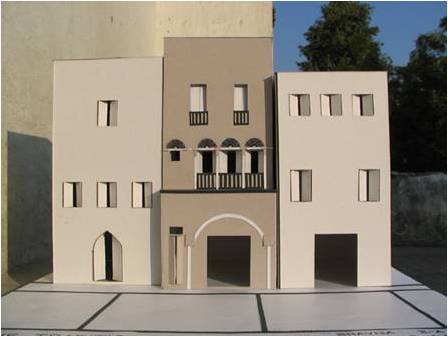
Dwelling at Chandni Chowk, Delhi (Paper Model)
Location:
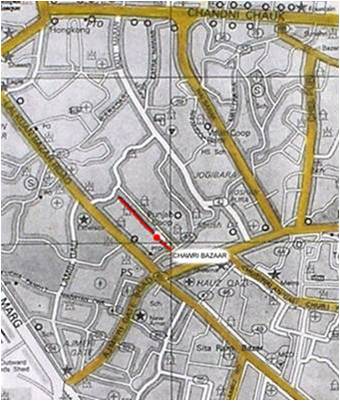
- The house is almost 150 years old and is located along an extremely narrow street which eventually ends at a ‘chowk’ (junction of 2 or more roads).
- Chowks were one of the typically indigenous elements of the the city of Shahjahanabad.
- Located in the composite climatic zone,the house form responds well to summers but is not well suited for winters.
- Surrounded by a cluster of buildings on either side, the house has a distinct character of its own due the beautiful stained glass arches on its façade.
- The small width to height ratio cuts off heat and light.
- Infact, this particular house also has the maximum number of windows in comparison to the other houses on the street (considering that windows could be provided only on the front façade)
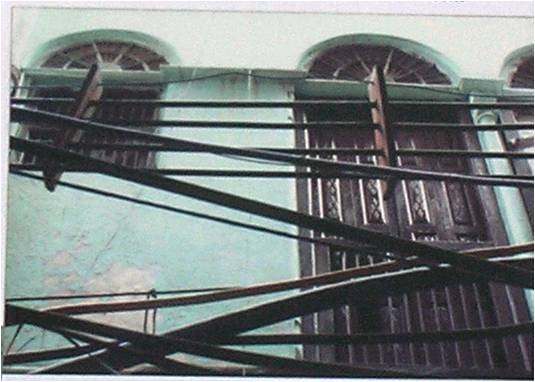
View from Outside
- It was initially built for a Sikh family of ten.The men were small merchants while the women took care of the household.
- Presently a family of four resides on the first and second floor of the house.
- There used to be a very grand ornate entrance to this house and the ground floor consisted of a central space surrounded by a number of store rooms.
- However all of this was modified and only remains of the pillars at the entrance remain.
Zoning:
Zoning in the house has been done in such a way that the public areas are on the first floor while the private and semi-private areas are on the second.The house also has a terrace.
The first floor consists of:
- Living room(Public)
- Bedroom(Private)
- Bathroom(Private)
- The second floor consists of:
- Bedroom(Private)
- Mandir(Semi-private)
- Kitchen(Semi-private)
- Toilet(Private)

Schematic Plan (Ground Floor)
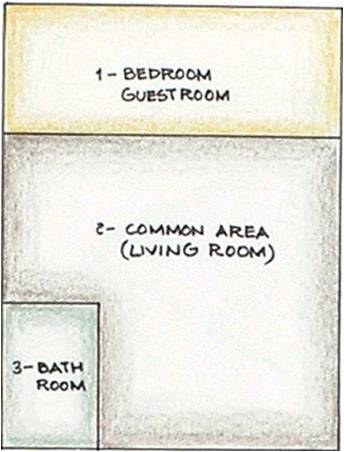
Schematic Plan (First Floor)
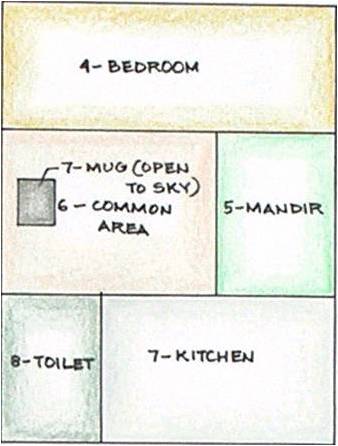
Schematic Plan (Second Floor)
Hierarchy of Spaces
- The hierarchy of spaces is shown in the plans below where :
- Public areas(green),semi-private areas(orange),private areas(red).
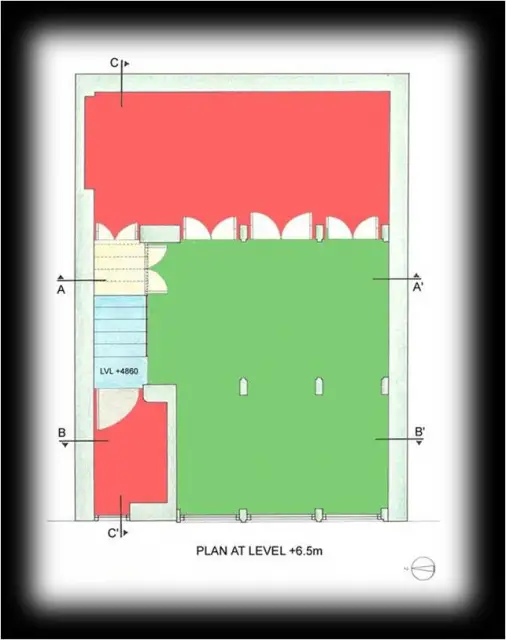
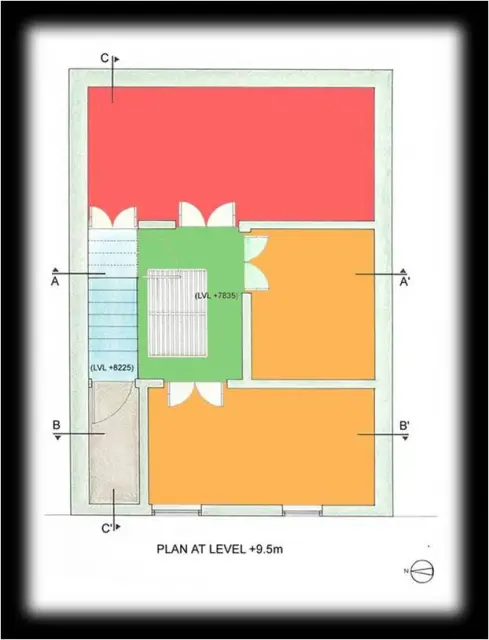
Space-Activity Chart
| S.No |
SPACE | ACTIVITY | BY WHOM | WHEN | FURNITURE |
| 1. | Living Room |
Sleeping, Eating Relaxing, Playing |
Family Members, Guests |
Through Out the day |
Chowkies, Piris Mats |
| 2. | Bed Room |
Sleeping, Eating, Sitting, Chatting |
Family Members and Guests, Women |
Afternoon and Night |
Charpoys, Mats |
| 3. | Kitchen |
Cooking, Eating Gossiping |
Generally by Women |
Through out the day |
Angithis, chowkies Mats |
| 4. | Mandir | Praying | Family Members | Morning | Mats |
Special Features:
1. Direct Entry to the First Floor
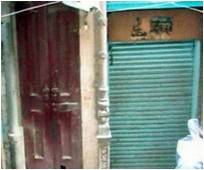
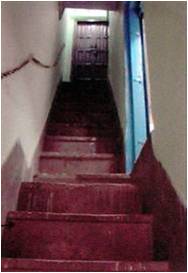
- The entrance now consists of a series of steps from the street that lead to the main entrance on the first floor.
- Whether done consciously or unconsciously,this steep stairway acts as a transition space between the lane outside and house inside.
- It provides visual privacy and an element of wonder as to what lies beyond.
2. Living Room

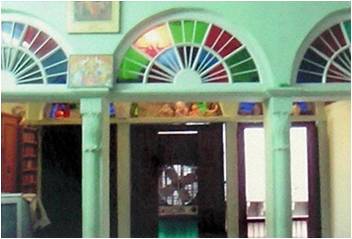
- The living room consists of long windows overlooking the streets which not only let in fresh air and light,but also enabled the residents to enjoy the processions that passed by.
- Ornamentation (Islamic style) is minimal but beautiful in the form of stained glass arches and carved stone pillars.
3. Bedroom / Guestroom


- The bedroom which is used as a multipurpose area during the day is used as a sleeping area by women at night and has a number of doors placed directly opposite the windows (that faces the street), thereby enabling cross ventilation.
4. Kitchen

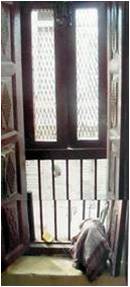
- The kitchen also consists of long windows overlooking the street.
- Thus there was no problem of smoke and the women looked down through these windows to for making preparations for visitors beforehand as well as gossip with neighbours.
- It was considered to be a sacred place in the house and was built on the second floor to keep it away from the rush of people downstairs.
5. The Small Opening
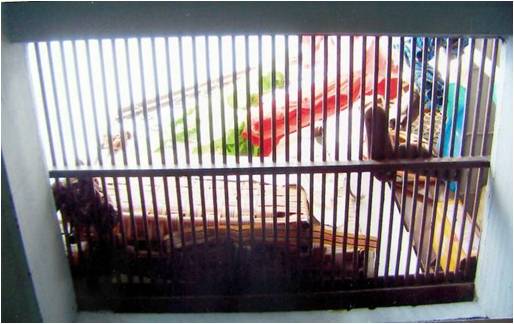
- A ‘mug’ or small opening covered with iron grating has been provided on the second floor and the terrace.
- This particular cut-out not only acts as light shaft but also keeps the house cool in summers due to the ‘stack effect’.
6. Other Features
- Double shutter foldable doors, niches and slabs in the walls for storage,narrow staircases etc.
- Every room has a threshold to keep away water and insects
- Walls of the house are quite thick which delay the heat transfer(time lag factor),thereby increasing the comfort levels in summers.
- Pale colored linoleum tiles have been used on the terrace which increase surface reflectivity.
- Minimal ornamentation in the form of stained glass arches and carved stone pillars.
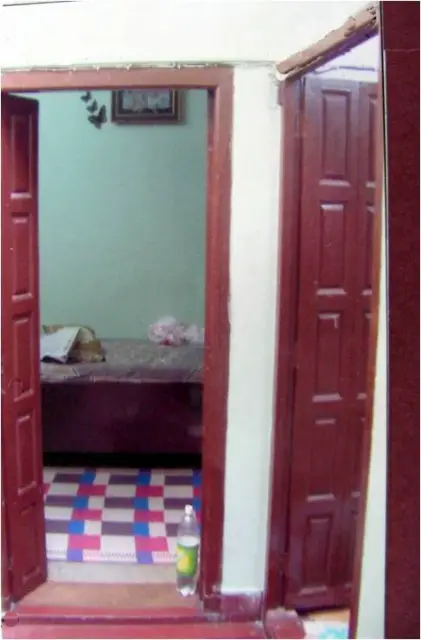

7. Building Materials
There have been various building materials used in the house and which are intact even now.These are:
- Lakhauri or Nanakshahi bricks
- Sagwaan wood
- Stone pillars and slabs
- IPS,terazzo and mosaic flooring
- Sandstone roof slab over steel or wooden sections
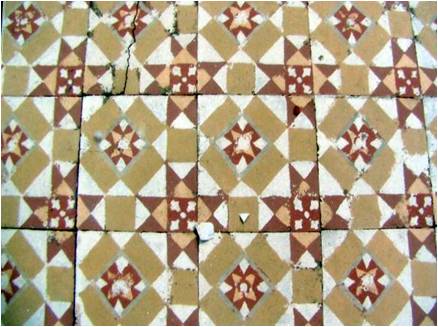
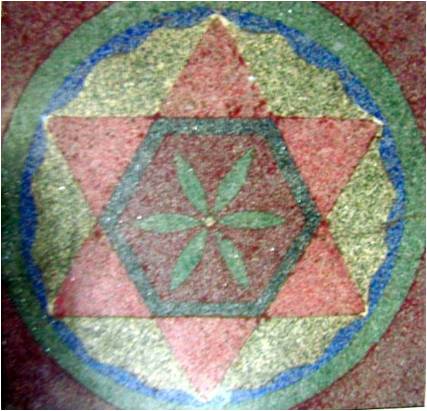
By: Bhavana Muttreja

This information is really
This information is really helpful.
Thank you for sharing 🙂